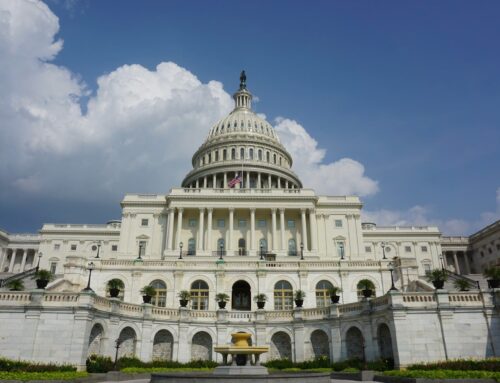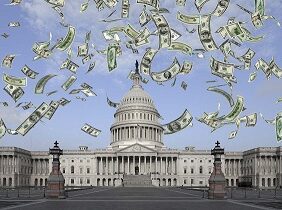And you thought your summer vacation cost a lot. The last few months have been expensive for taxpayers. The Congressional Budget Office – the nonpartisan scorekeeping arm of Congress – just released their Budget and Economic Outlook update. This is a report they publish a couple of times each year. The front page tells the tale of budget woe. An $800 billion increase in ten-year budget deficits from their May (!!) estimate.
But wait, it gets worse.
The cumulative deficits would be more than $1 trillion higher except CBO projects a relatively weak economy compared to its forecast just three months ago. This is in part because of the economic drag caused by the president’s tariffs. A weaker economy means interest rates are less likely to increase (and may even be cut a bit.) CBO estimates the dip in economic activity and lull in interest rates will reduce the cost of interest spending to service the nation’s growing debt. Gulp.
But wait some more, it’s actually worse than it appears.
Under long-stablished budget rules and guidance, CBO takes Congress on face value. The recent budget deal reset the baseline for discretionary spending $150 billion higher for 2021 than the previously capped level (which, we’d like to point out was actually $75 billion more than was spent in 2017). After 2021 there is no BCA or dreaded sequester, it’s back to business as normal for Washington. So CBO follows convention (and experience) and estimates spending will increase at the rate of inflation annually. Government often exceeds inflation, so that’s a conservative estimate. They also assume that the current tariffs will remain in place and what is in law will happen. So their calculations assume the provisions in the 2017 tax cut that expire in 2025 (bonus depreciation) and 2026 (virtually all the individual side tax cuts) will expire as envisioned. Congress cynically structured the package this way to make it appear cheaper and put pressure on a future Congress and president to make much of them permanent. Hey, it worked for the 2001 and 2003 tax cuts when they were about to expire.
So what do we have? First off, the FY2019 deficit will be an estimated $960 billion, just shy of $1 trillion. That’s 4.5 percent of GDP. By 2029, the deficit is estimated to be 4.8 percent of GDP, averaging 4.7 percent over that period. What was the average deficit over the last 50 years, you ask? Try 2.9 percent. And that includes the post Great Recession years when it was over 6 percent for four consecutive years (including nearly 10 percent in 2009). The debt will be the highest it has been since right after World War II.
After growing at 2.5 percent in 2018, real gross domestic product, the estimate for 2019 is 2.3 percent and slowing to an average of 1.8 percent over the next decade.
Because of decisions made by previous administrations, much of this fiscal situation was going to happen. Failure to responsibly tackle entitlement spending, costly wars, stimulus, and tax cuts to name a few. But this administration’s recent deficit-financed tax cut and two costly budget deals coupled with an economic drag from the trade war really turned the screws.
The most recent talk – which is or maybe not happening depending on the day – is to push for stimulus to avoid recession. A payroll tax holiday to boost consumer spending, indexing capital gains to inflation to reduce the tax hit. Both would hit the deficit even harder.
CBO sums up what has to happen: “To put debt on a sustainable path, lawmakers will have to make significant changes to tax and spending policies – increasing revenues more than they would under current law, reducing spending below projected amounts, or adopting some combination of those approaches.”
Let’s do it.










Get Social